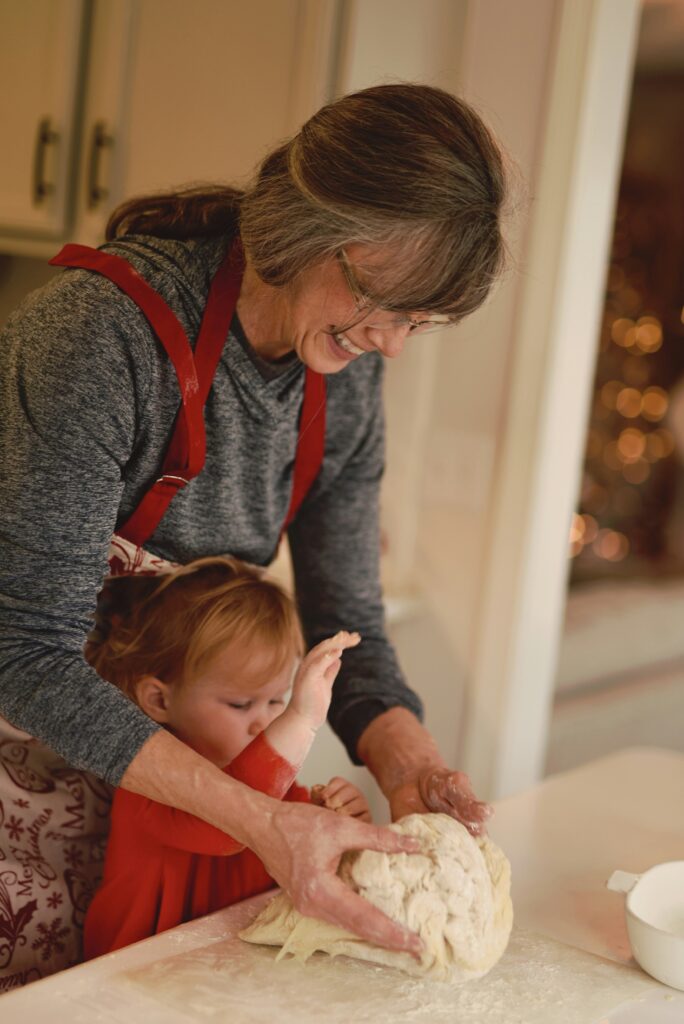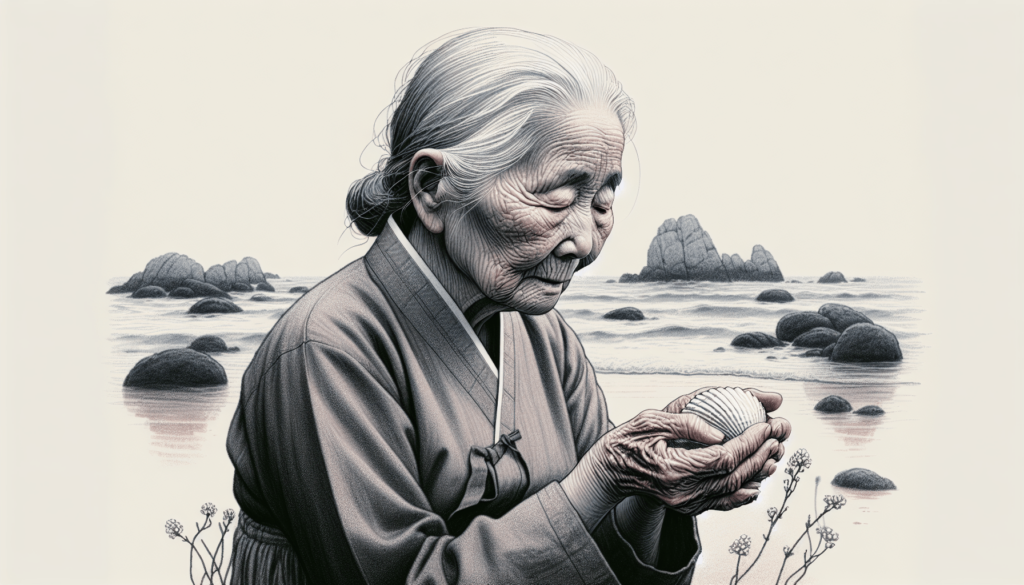You stumbled upon a fascinating documentary called “한국기행 – 바다야 고마워 5부 할머니의 굴” by EBS Documentary. The documentary explores the role of women in the village of Ganwoldo, where they play a significant part in harvesting clams. The film focuses on the story of an 88-year-old grandmother named Noh Doo-yeon, who has been harvesting clams since the age of 18. Despite the challenges, she has provided for her family and raised five children. In this episode, a special guest visits Noh Doo-yeon, bringing food to her hardworking mother who hasn’t even had time to eat. The documentary offers a glimpse into the arduous yet fulfilling life of these resilient women who rely on the sea for their livelihood.
할머니의 굴
Introduction
In the small fishing village of Gwanwoldo, nestled along the coast, there is a tradition that has been passed down through generations – the art of gwul-gae, or gathering oysters. This tradition is upheld by the hardworking and dedicated grandmothers of the village, who brave the harsh winter climate and work tirelessly to harvest the delicious oysters that are abundant in the coastal waters. In this article, we will explore the life in Gwanwoldo, the role of women in the community, the story of Gwandeok Grandma, the process of gwul-gae, and the joys and challenges that come with this age-old tradition.

Life in Gwanwoldo
The Beauty of Gwanwoldo
Gwanwoldo is a picturesque village surrounded by stunning natural beauty. With its coastal location and scenic views of the ocean, it attracts visitors from near and far. The peaceful atmosphere and close-knit community make Gwanwoldo a truly special place to live.
Living by the Sea
Life in Gwanwoldo is intimately connected to the sea. The villagers rely on the ocean for their livelihoods, with fishing and oyster gathering being the primary sources of income. The vibrant coastal ecosystem provides an abundance of seafood, including the prized oysters that the grandmothers of Gwanwoldo collect.
The Harsh Winter Climate
Living in a coastal village also means enduring the harsh winter climate. The biting winds and freezing temperatures pose challenges, but the grandmothers of Gwanwoldo face these hardships head-on. They bundle up in warm clothing, brave the elements, and make their way to the oyster beds every day, regardless of the weather conditions.
The Importance of Gwul-gae
Gwul-gae, or gathering oysters, is an essential activity in Gwanwoldo. The oysters harvested by the grandmothers provide sustenance for the village and are an important source of income. Gwul-gae is not only a means of survival but also a cherished tradition that has been passed down through generations, symbolizing the hard work and resilience of the people of Gwanwoldo.
The Role of Women in Gwanwoldo
The Significance of Gwul-gae
In Gwanwoldo, the role of women in gathering oysters is highly valued and respected. The oyster beds are traditionally reserved for the grandmothers, who have honed their skills and knowledge over many years. Their expertise in gwul-gae is crucial to the community’s survival and prosperity.
Strength and Hard Work
The grandmothers of Gwanwoldo exemplify strength and hard work. They wake up early in the morning, ready to face the challenges of the day. With immense physical strength and unwavering determination, they navigate the treacherous oyster beds and collect the oysters with precision and efficiency.
Supporting the Family
The grandmothers not only provide for themselves but also support their families through their work in gwul-gae. They often take on the responsibility of providing for their children and grandchildren, ensuring that they have enough food on the table and a comfortable life. Their unwavering dedication to their family is truly admirable.
The Story of Noduyeon Grandma
Among the grandmothers of Gwanwoldo, there is one woman whose story stands out – Noduyeon Grandma. At 88 years old, she has been gathering oysters since she was 18. Noduyeon Grandma has single-handedly raised her five children by working tirelessly in gwul-gae. Her story is a testament to the strength and resilience of the women in Gwanwoldo.

Gwandeok Grandma
Age and Experience
Gwandeok Grandma, an elder in the community, is a revered figure in Gwanwoldo. With decades of experience in gwul-gae, she has become a master of her craft. Her wisdom and knowledge have been passed down to the younger generations, ensuring that the tradition of gwul-gae continues to thrive.
Continuing the Tradition
Gwandeok Grandma’s dedication to gwul-gae is unwavering. Despite her age and the physical demands of the work, she continues to gather oysters every day, setting an example for the younger members of the community. Her commitment to the tradition serves as an inspiration to all.
The Challenges of Old Age
As Gwandeok Grandma has grown older, she faces challenges that come with aging. The physical demands of gwul-gae can be arduous, and her aging body sometimes struggles to keep up with the rigorous work. However, her determination and love for the craft keep her going, proving that age is no barrier to pursuing one’s passion.
The Love for Grandchildren
Gwandeok Grandma’s love for her grandchildren is evident in everything she does. She provides for them, not only with material support but also with the wisdom and knowledge she has gained over the years. Her grandchildren hold a special place in her heart, and she takes great joy in passing on the traditions of Gwanwoldo to the younger generations.
Special Guest
A Surprise Visit
On this particular day, a special guest has come to visit Gwandeok Grandma. Park Kyung-hee, her eldest daughter, arrives with an armful of food. Despite her own busy schedule, Park Kyung-hee has taken the time to prepare a delicious meal for her hardworking and perpetually hungry mother.
The Sacrifices of a Mother
Park Kyung-hee’s visit serves as a reminder of the sacrifices mothers make for their families. She recognizes the tireless efforts and hardships her mother has endured to provide for her children. The warmth and love that permeate the room during their reunion are a testament to the deep bond between a mother and her child.
The Warmth of Family
The gathering of the family around Gwandeok Grandma’s table is a heartwarming scene. Despite their busy lives, the family members come together to share a meal and express their gratitude for all that Gwandeok Grandma has done. The love and respect they have for her are evident in their interactions, reaffirming the importance of family in Gwanwoldo.

Hard Work and Sacrifice
The Daily Routine
Gathering oysters is no easy task. The grandmothers of Gwanwoldo wake up early in the morning to begin their day’s work. They prepare themselves physically and mentally, knowing that the success of their harvest depends on their dedication and hard work.
The Physical Demands of Gwul-gae
Braving the cold waters and battling against the elements, the grandmothers face physical challenges during gwul-gae. The heavy baskets filled with oysters require strength and stamina to carry, and the repetitive motions of gathering the oysters can take a toll on their bodies. However, their unwavering commitment to the tradition keeps them going.
The Importance of Community Support
The grandmothers of Gwanwoldo rely on the support of their community to succeed in gwul-gae. The villagers come together to assist each other, sharing tasks and providing help when needed. The sense of camaraderie and mutual support create a strong bond within the community, ensuring the success of their collective efforts.
The Tradition of Gwul
The Origin of Gwul-gae
The tradition of gwul-gae has deep roots in the history of Gwanwoldo. Passed down from generation to generation, it has evolved into a vital part of the village’s identity. The oysters gathered through gwul-gae have provided sustenance and economic stability for the community for centuries.
The Process of Gwul-gae
Gwul-gae involves several steps, from preparing for the harvest to cleaning and sorting the oysters. The grandmothers use their expertise to ensure that every oyster is carefully collected and handled. The process requires precision and skill, honed over years of experience.
The Significance of Gwul-gae
Gwul-gae holds great significance in Gwanwoldo. It represents the resilience, hard work, and unity of the community. The oysters gathered through this tradition not only sustain the villagers but also symbolize their connection to the sea and their reliance on its resources.

The Process of Gwul-gae
Preparing for Gwul-gae
Before embarking on their oyster-gathering journey, the grandmothers of Gwanwoldo make necessary preparations. They don their heavy clothing, ready to face the elements, and ensure they have all the tools they need for the harvest. Their meticulous planning sets the stage for a successful gwul-gae.
Collecting the Gwul
With their baskets in hand, the grandmothers venture into the coastal waters. They carefully navigate the oyster beds, using their expert knowledge to identify the best spots for collecting the oysters. Their swift and precise movements allow them to gather the oysters with efficiency and accuracy.
Cleaning and Sorting
Once the oysters are collected, the grandmothers return to land and begin the process of cleaning and sorting them. They meticulously go through each oyster, ensuring that only the highest quality ones are selected for consumption. Any damaged or subpar oysters are discarded, leaving only the best for the village.
Seasoning
After the cleaning and sorting process, the oysters are ready to be seasoned. The grandmothers use traditional methods and a carefully crafted blend of spices to enhance the natural flavors of the oysters. The seasonings are applied with precision, ensuring that each oyster is infused with the perfect balance of flavors.
Cooking Methods
The grandmothers of Gwanwoldo employ various cooking methods to showcase the delicious taste of gwul. From grilling and steaming to incorporating oysters into traditional dishes, they experiment with different recipes to bring out the unique flavors of the oysters. Each method highlights the natural sweetness and freshness of the oysters, making every bite a delight.
The Joys and Challenges of Gwul-gae
Gwul-gae comes with its own set of joys and challenges. The grandmothers take pride in their work, finding joy and fulfillment in providing for their community and preserving their cultural heritage. However, the physical demands and unpredictable nature of the sea present challenges that they face with resilience and determination.

The Delicious Taste of Gwul
After all the hard work and dedication, the grandmothers of Gwanwoldo are rewarded with the delicious taste of gwul. The unique flavors and textures of the oysters captivate the palate, leaving a lasting impression. The pride and satisfaction of knowing that they have contributed to the culinary heritage of their village make every bite even more enjoyable.
Conclusion
The tradition of gwul-gae is deeply ingrained in the fabric of Gwanwoldo. The grandmothers of the village embody the strength, resilience, and love that define their community. Through their hard work and sacrifice, they ensure that the tradition of gwul-gae continues to thrive, passing on their knowledge and love for the craft to future generations. Gwanwoldo is not only a place of breathtaking beauty but also a testament to the power of tradition, unity, and the unwavering spirit of its grandmothers.

